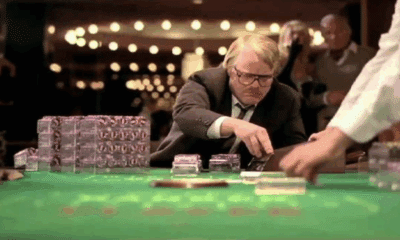2010 was the year that James Cameron unveiled to us a vision of the future. This vision was encapsulated in the AVATAR, which was a watershed for Hollywood and the business of movie-making. But after fellow Hollywood mogul Steven Spielberg lashed out at movie special effects this summer, accusing them of “becoming too special”, we take a look at the debate for and against the effects laden blockbuster.
Summer 2010, Steven Spielberg told Empire magazine: “There are too many special effects in all these movies today. It means that the movie starts on a special effect, ends on a bigger special effect, and the middle is the same special effect.” He might have been referring to the recently opened movie The A-Team where Bradley Cooper shoots down aerial attack drones from a free-falling tank that has just been ejected from an exploding C-130 transport plane… cool though this may have been you do have to wonder if “the beard” may have a point. Is Hollywood moving away from narrative, favouring the spectacle over the substance… certainly this year has been a 3-D Fest.
Equally though, this is a little like the pot calling the kettle black. At least on the surface. Many have found it ironic that the man who is responsible for the effects laden CLOSE ENCOUNTERS OF THE THIRD KIND and JURASSIC PARK is finding it appropriate to comment on the decline of story in favour of effects. Certainly, Spielberg seems to have succumbed to this in some ways if WAR OF THE WORLDS is to be taken as a part of the argument.
There are more special effects in movies these days, but they’re not always there to let Bradley Cooper do the aforementioned destruction! Often, the best special effects do little to call attention to themselves. Take the case of 2000’s Erin Brockovich, in which the title character, played by Julia Roberts, gets hit by a car in the opening scene. You don’t put a $20-million star in that kind of danger, no matter what the script says, so the filmmakers digitally blended footage of Roberts with that of an empty car being hit by a stunt driver. Seamless… invisible and effective.
The films of 2010 were filled with special effects that featured little or no mayhem. Look at Armie Hammer in The Social Network. Now look at him again. The actor, chosen as best supporting by the Toronto Film Critics Association, played Harvard golden boy Cameron Winklevoss, but he also portrayed Cameron’s identical twin, Tyler–at least, from the neck up. In fact, a look-alike actor Josh Pence was Tyler in scenes where we can’t see his face; the rest of the time it’s Hammer’s head digitally stitched to Pence’s body.
Even more digital trickery was required to turn 61-year-old Jeff Bridges into Clu, his 35-year-old doppelganger, in TRON: LEGACY , which opened Friday. Bridges had his features laser-scanned into a computer (how Tron-like!), which then “de-aged” him by a quarter century. Halifax’s John Reardon appears onscreen as Clu in the kind of body-only performance we’ll be seeing more of in years to come.
This will no doubt complicate casting calls and actors’ lives. Aspiring young thespians may want to have their faces digitized against the day when they want to play a younger version of themselves. And whether an actor has the body of Johnny Depp or John Goodman, he could have a future as a digital body double — call it getting ahead by getting a head.
What does everybody think of the future of movies? Will 3-D run its course? Will the industry rebel and get back to 2-D drama shot with a great script? Does 3-D/Effects cinema represent a move towards we would call total cinema… an experience of more than just sight for the viewer; at once immersive and physical as well as cerebral or is it simply another trick in the canon?

Latest Posts
-


Film Reviews
/ 1 day ago‘Fear Street: Prom Queen’ review: Dir. Matt Palmer (2025)
It has been four years since Leigh Janiak’s Fear Street trilogy took horror fans...
By Kat Hughes -


Film Reviews
/ 1 day ago‘The Surrender’ review: Dir. Julia Max (2025)
As Julia Max’s debut feature, The Surrender, unfolds, the inspirations for the film become...
By Kat Hughes -


Film Trailers
/ 3 days agoFirst trailer for Darren Aronofsky’s ‘Caught Stealing’
Sony Pictures has released the debut trailer for Darren Aronofsky’s new film Caught Stealing,...
By Paul Heath -


Film Reviews
/ 4 days ago‘Lilo and Stitch’ review: Dir. Dean Fleischer Camp (2025)
Director Dean Fleischer Camp won audiences over with the fantastic Marcel the Shell with...
By Kat Hughes






